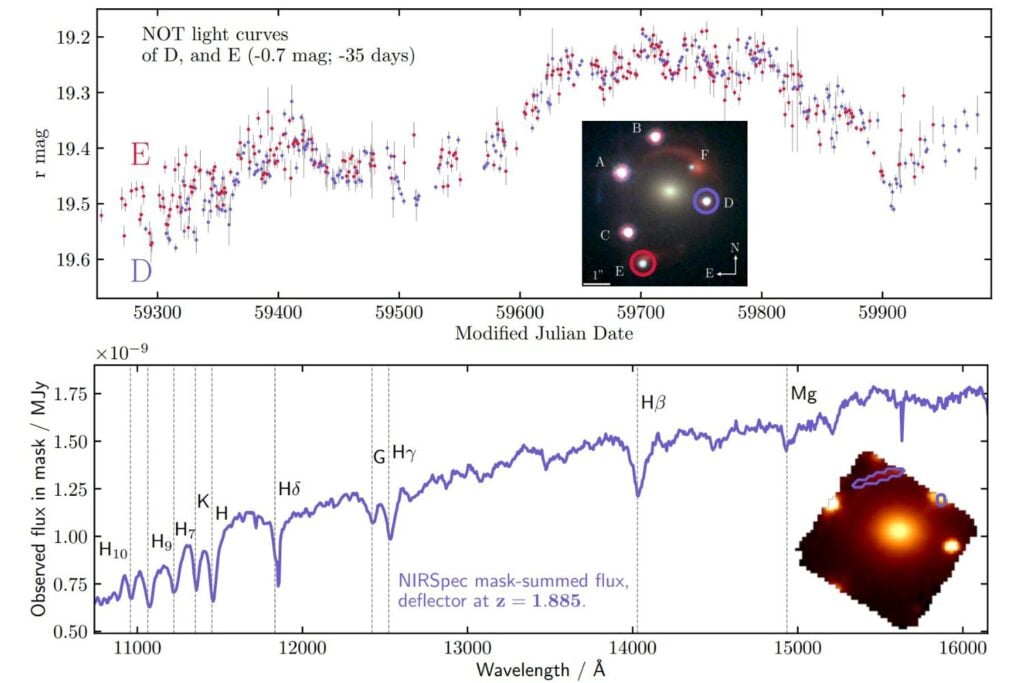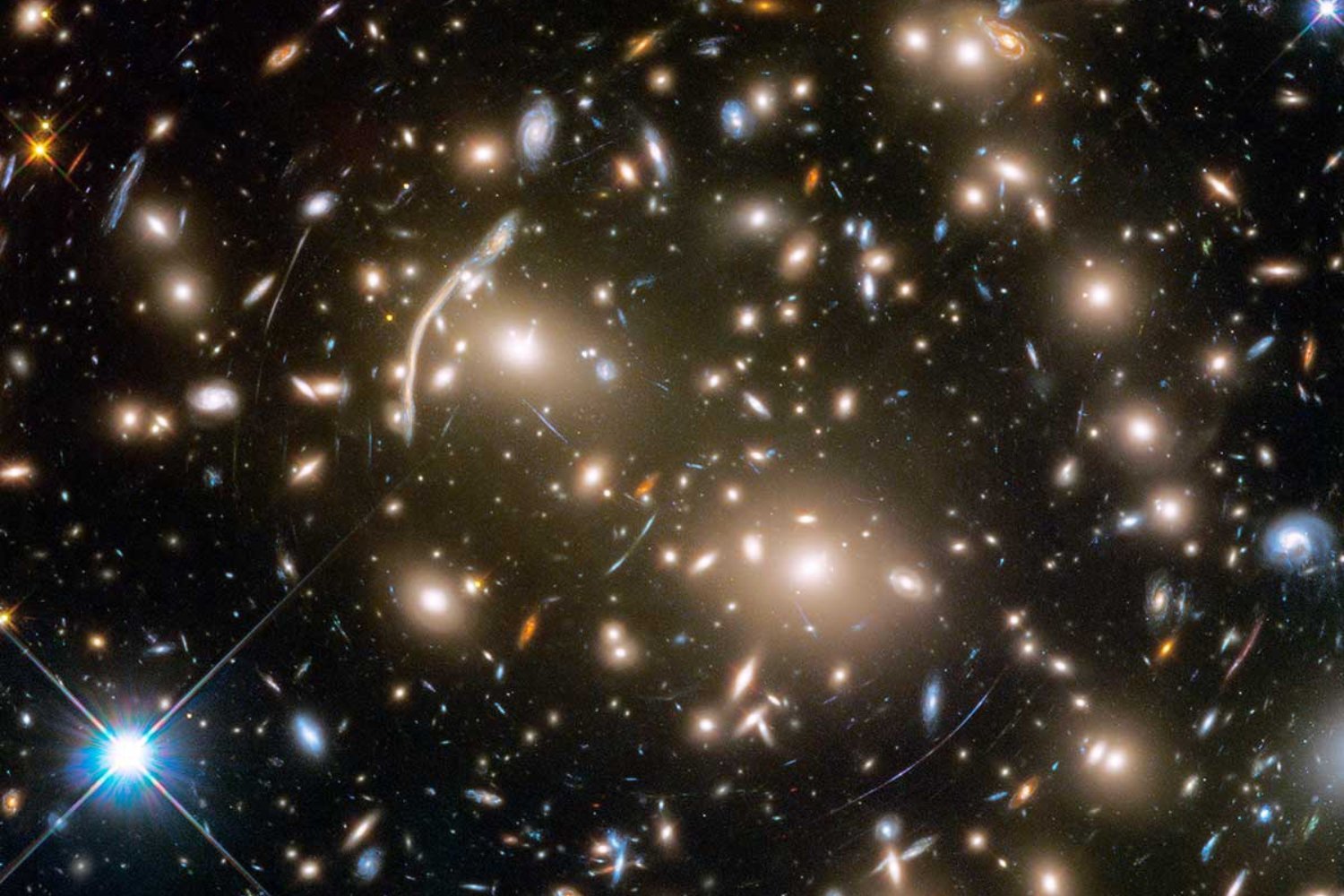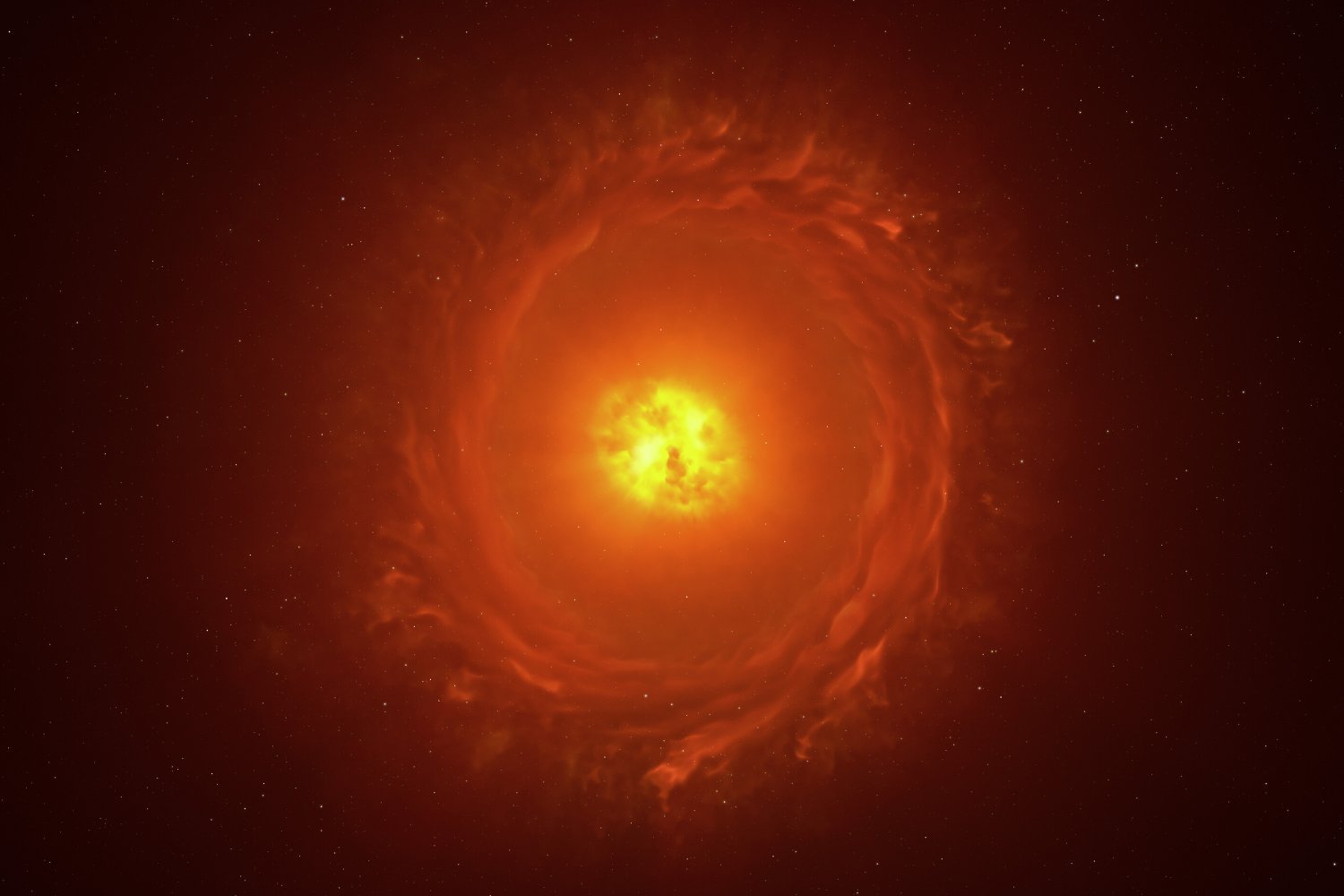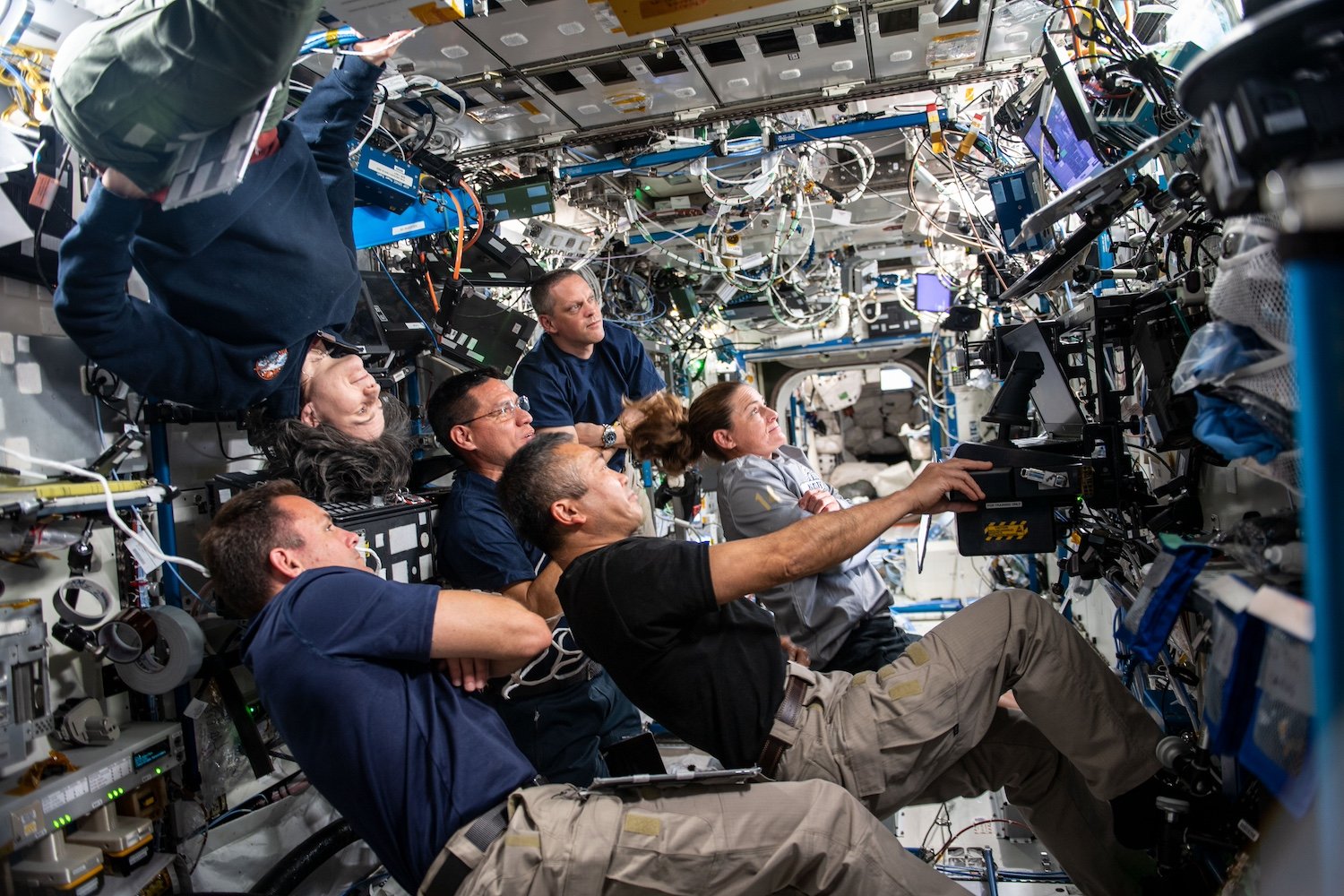A celestial light source initially identified as a galaxy bending light from a distant active galactic core has been revealed as an incredibly rare and unprecedented gravitational lens. This groundbreaking discovery, made by a team of researchers, offers exciting new possibilities for understanding the cosmos.
The system, designated J1721+8842, was first observed in 2017. Originally thought to be a galaxy lensing the light of a distant quasar, recent observations with the Nordic Optical Telescope and data from the James Webb Space Telescope paint a different picture. The new research, available on the preprint server arXiv, suggests J1721+8842 is a compound lens, formed by two aligned galaxies, with light traversing the lens in a unique zig-zag pattern.
A Unique Compound Lens
The research team’s findings confirm that a single source is being lensed in J1721+8842. “In this letter, we present evidence from the light curves obtained at the Nordic Optical Telescope (NOT), new redshift measurements from the James Webb Space Telescope (JWST) Near InfraRed Spectrograph (NIRSpec), and updated lens models, which unambiguously confirm the scenario where one single source is lensed in J1721+8842,” the team explains.
Gravitational lenses, massive objects warping the fabric of spacetime and bending light from distant sources, were first theorized by Albert Einstein in 1912. These cosmic magnifiers allow astronomers to observe light from objects too faint to be seen otherwise, effectively offering a glimpse into the ancient universe. A notable example is the discovery of Earendel, the oldest known star, in 2022 using a gravitational lens.
 A graphic showing the source and double lens of the system.Diagram illustrating the source and the double lens system. Credit: Dux et al. 2024
A graphic showing the source and double lens of the system.Diagram illustrating the source and the double lens system. Credit: Dux et al. 2024
Einstein Rings and Dark Matter
Gravitational lenses can sometimes create stunning visual phenomena known as Einstein rings, circular distortions of light. Recent research has suggested that some Einstein rings might offer clues to the nature of dark matter, the elusive substance comprising approximately 27% of the universe. Earlier this year, scientists at Lawrence Berkeley National Laboratory identified a complex gravitational lens with a configuration akin to “eight needles precisely lined up,” containing an Einstein Cross, revealing the symmetrical distribution of mass, including dark matter, within the lens.
The Einstein Zig-Zag
J1721+8842 stands apart from previously discovered gravitational lenses due to its unique light path. Instead of a simple bend, the light zig-zags through the two galaxies, earning it the title of the first-ever “Einstein zig-zag lens.”
Implications for Cosmology
The researchers anticipate further studies on J1721+8842, stating, “Full lens models, time-delay measurements and cosmology constraints derived from this system will be published in follow-up papers as part of the TDCOSMO collaboration.” This research could significantly impact our understanding of the Hubble constant, the value describing the universe’s expansion rate, and potentially resolve the current discrepancy in its measurement, known as the Hubble tension.
The team highlights the lens’s potential to “constrain the ratio of distances between the observer, the lens and the two sources, allowing precise measurement of the expansion history of the Universe.” This capability offers a new avenue for refining cosmological models and understanding the universe’s evolution.
A Cosmic Magnifying Glass
Advanced telescopes are remarkable tools for exploring the universe and addressing fundamental questions about our origins and future. Gravitational lenses enhance these instruments’ power, magnifying distant regions of space and unveiling secrets hidden within the cosmos. J1721+8842, the “Einstein zig-zag lens,” is not only a fascinating astronomical phenomenon but also a valuable asset in our quest to unravel the mysteries of the universe.










